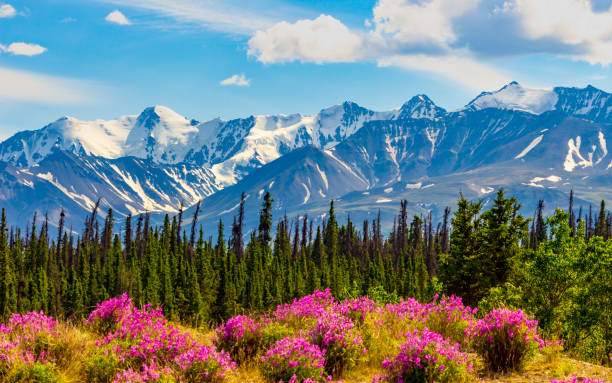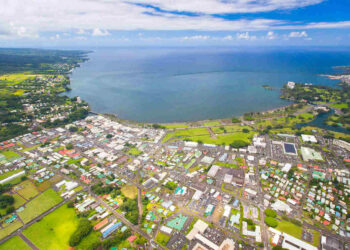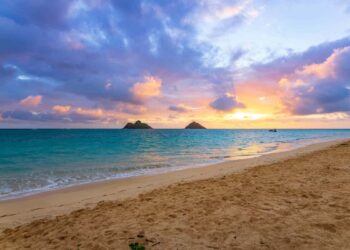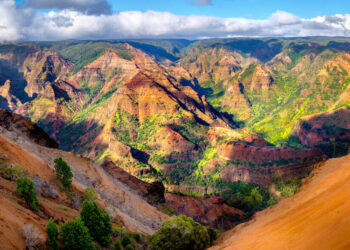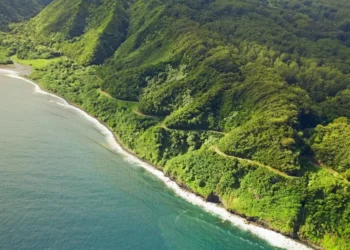Nestled in Canada’s northwestern corner, the Yukon Territory feels like a secret pocket of the world—a vast stretch where rugged peaks claw at the sky, rivers etch their way through ancient valleys, and the horizon dares you to chase it. It’s untamed beauty, raw and sprawling, home to just over 40,000 people across a land bigger than plenty of countries.
The wild runs the show here. Think of the Klondike Gold Rush—tales of gritty prospectors and wide-open frontiers—and then picture it not just as history, but as something still breathing, calling out to anyone who listens. Whether it’s the northern lights flickering above, a river’s edge whispering for a paddle, or simply the lure of space, the Yukon’s got a pull. Here’s a rundown on what makes this northern gem tick.
Getting There: The Journey Starts It Off
The Yukon’s off-the-grid charm is half its magic, but reaching it isn’t the ordeal you might expect. It’s all about what you’re craving—speed, scenery, or a bit of both.
Flying into Erik Nielsen Whitehorse International Airport (YXY) keeps it simple. Air Canada and WestJet zip up from Vancouver, Calgary, or Edmonton. The airport’s a small affair—handful of gates, a quick shuffle to the curb—which feels just right. Step outside on a brisk fall day, and the air’s got a bite, sharp enough to wake anyone up. Whitehorse, the capital, sits there as the starting line, a gateway to the territory’s wilder corners.
Driving’s a whole different beast, and a gorgeous one at that. The Alaska Highway rolls out over 2,200 kilometers from Dawson Creek, British Columbia—a thin thread of asphalt weaving through dense forest and barren tundra. It’s no dash; gas stations fade away, and moose wander across like they own the place. The tradeoff? Views that stop you cold—silence split only by a raven’s call now and then. From Alaska, the Klondike Highway out of Skagway cuts a shorter, equally stunning path, twisting past peaks and still lakes.
A seasonal bus, like the Alaska Shuttle, links up from the south or Skagway too. It’s a slow roll, but perfect for soaking in the landscape without a hand on the wheel. Any route you pick, the trip itself hints at what’s coming—the Yukon doesn’t let you sneak in unnoticed.
When to Go: Seasons Set the Scene
Timing matters up here; the seasons don’t mess around. Summer, June to August, draws the big crowds—days stretch long with nearly 20 hours of light, and the air hovers between 15 and 20°C. That’s when the Yukon comes alive: trails open up, rivers flow free, and the midnight sun casts a strange, glowing spell. Picture paddling under a sky that won’t dim—time feels like it’s playing tricks.
Fall sweeps in by September, splashing the forests with gold and red before winter locks everything down. November to March turns harsh—temps dive below -20°C—but the reward is the aurora borealis, streaks of green and purple slashing the dark. Imagine standing in that freeze, breath puffing out, the sky dancing overhead. Spring lags behind, thawing in May, quieter and caught between the extremes. Summer’s the go-to for newcomers, but winter’s got a haunting pull if the cold doesn’t scare you off.
Where to Stay: From Town to the Edge
Places to crash here range from city comforts to outposts that feel like the world’s end. In Whitehorse, the Coast High Country Inn’s a steady pick—clean, modern, a stone’s throw from downtown’s hum. The Edgewater Hotel, right by the Yukon River, leans into a cozier, boutique vibe, tipping a nod to the town’s roots.
Beyond that, cabins and lodges take over. Tagish Lake Wilderness Lodge—reached by boat or floatplane—drops you into solitude, surrounded by looming peaks and lapping water. Quiet there hits different, thick and alive. Mount Logan EcoLodge near Haines Junction blends rustic with a front-row seat to Kluane National Park. Camping’s a big draw too—spots like Kluane Lake or Tombstone Territorial Park, simple but jaw-dropping. Bears roam, so gear up smart.
The Food: Tastes of the Land
Yukon’s grub mirrors its rough soul. At Klondike Rib & Salmon in Whitehorse, wood-fired salmon comes out so tender it’s almost unfair—tied tight to the rivers threading nearby. Dawson City’s caribou stew hits hard—gamey, hearty, a bowl that fights the chill. Moose and Arctic char show up too, straightforward but packed with flavor.
Foraged bits like cloudberries and cranberries pop into jams or sit beside a cold Yukon Brewing beer. Bannock, that heavy Indigenous flatbread, goes with stew or holds its own—grab some from a Whitehorse bakery and eat by the river while ravens swoop. Seasonal markets sling preserves and root veggies, grown fast under summer’s endless sun.
What to See: The Yukon’s Pulse
The draw here is the sheer size and the stories baked into it—here’s what stands out. Kluane National Park and Reserve cradles Mount Logan, Canada’s tallest, plus glaciers and valleys that look like they’re painted on. Hiking there feels like wandering into something unreal—rugged and untouched. Dawson City’s a Gold Rush time capsule—creaky boardwalks, saloons, the Dawson City Museum spinning yarns of luck and ice. You can almost hear the picks striking back in 1898.
The SS Klondike National Historic Site in Whitehorse keeps a sternwheeler docked, a piece of the old river trade days. Its decks carry the weight of time gone by. Tombstone Territorial Park, off the Dempster Highway, throws up jagged peaks that blaze in fall—hard to drive through without pulling over every mile.
Tips for the Road: Moving Through
Whitehorse you can stroll, but the Yukon’s sprawl begs for a car—grab a 4×4 for gravel or ice. Summer calls for light clothes and bug spray; mosquitoes don’t play nice. Winter demands the real stuff—parka, boots, gloves—or you’ll feel it. Fuel’s spotty outside towns, so top off when you can. Wildlife’s everywhere—bears, moose, eagles—keep sharp and steer clear.
There’s plenty to do: hike Kluane, paddle the Yukon River, snowshoe when it’s white. Cash works best at little stops, and take it slow—the Yukon doesn’t rush for anybody.
Why It Sticks
The Yukon’s not just a spot to see—it digs in deep. The wild’s scale, the history scratched into the dirt, the way it pares life down to the core—it lingers. Leave with frost on your boots and a hum in your chest, already itching to circle back. Adventure, old stories, or a quiet that sinks into you—the Yukon’s waiting. Pack a bag and let it unfold.
